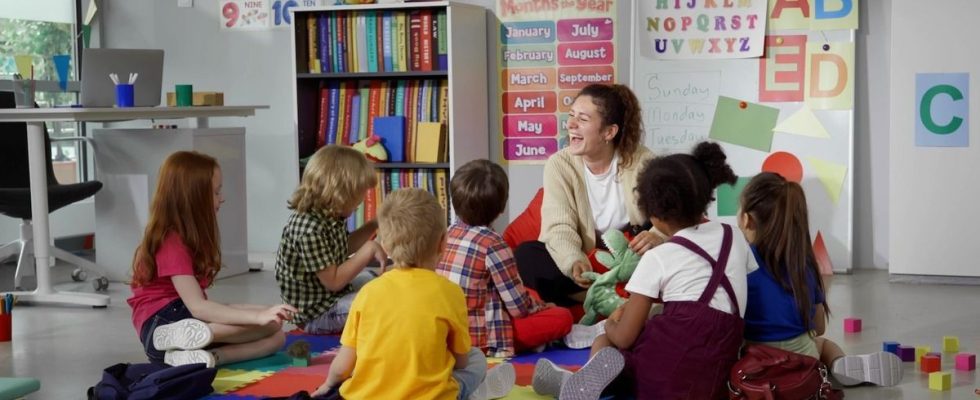Published on
Updated
Reading 3 min.
Marie Lanen
Head of parenting sections (baby, pregnancy, family), psychology and beauty

If school bullying is at the heart of parental, but also governmental, concerns; few concrete actions have been put in place to stem this scourge. Serge Tisseron, psychiatrist uses The Game of Three Figures in nursery classes to raise awareness among the youngest.
What if we talked about school bullying “too late”? The question can indeed arise when we know that one student per class, from CE2 onwards, would be harassed by one or more school friends. Serge Tisseron, psychiatrist is the author of a book for nursery school teachers in Belgium: “The Three Figures Game in nursery classes”. In this book, he tells professionals how to set up a game in their class once a week.
A game that raises awareness of harassment and develops empathy
This game would have many advantages:
- Learning to “pretend” which is also an introduction to the virtual;
- Pre-education to images through the possibility of finding a place in which children can talk about those which upset them or which they simply want to talk about;
- Learning reciprocal and mutual empathy as a means of combating violence in schools.
In practice, this game follows 7 steps. Here is the example of the progress of a session in the Grande Section class of Ms. P. Huc-Treins, Maternelle Le Village.
1. The teacher reminds the rules
2. Themes proposed by the children: A rain of mud and overturned cars, missing people and thirteen dead people; thieves tried to steal my mother’s car (theme not retained because it is a real situation); a stabbing in a middle school with an injured child; a man kidnaps several children and puts them in a truck. There is no consensus among the children on a theme: the teacher asks the children to vote on one of the possible stories. The third theme is retained.
3. Construction of the story “A man (a thief) kidnaps two children and puts them in a truck; the children bang on the body of the truck and two police officers free them.” The teacher recalls the characters (a thief, two children and two police officers) and summarizes the story.
4. Setting up actions and dialogues The thief: “Huh, eh, eh, I’m going to steal children!” He drives a truck. The children: “Help, help, we’re prisoners in the truck” (they bang on the door). The police arrive: “Don’t worry, we’ll save you””.
5. The teacher asks for student volunteers, distributes the roles, then recalls the instructions and the dialogues
6. Setting up the game and intermediate regulation by the teacher The children giggle, and the volunteers do not have intonations consistent with their roles… On the other hand, the gestures are interesting. The teacher suggests adding a sentence of dialogue which allows for better emotional involvement, recalls the texts to pronounce and the gestures to perform, then suggests playing the game a second time with new children.
7. Congratulations from children
Acting out the scene – the simultaneous actions of the dialogues – allows the child to engage his body and alternately experience the different postures: aggressor-victims-savior.
Play, a great way to learn
If all adults agree that children play for pleasure, did you know that play also allows young people to express their emotions and learn to control them, increase their experiences, establish social connections, to integrate their personality (and that of their classmates) and to communicate with others. This type of game, easy to set up in classes, would help develop empathy in children so that they are aware of school bullying from a very young age.
